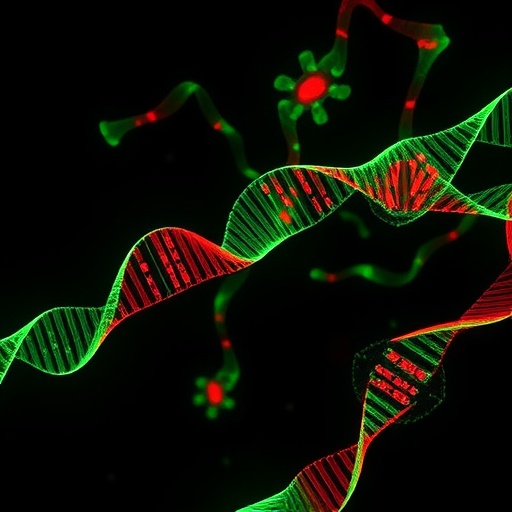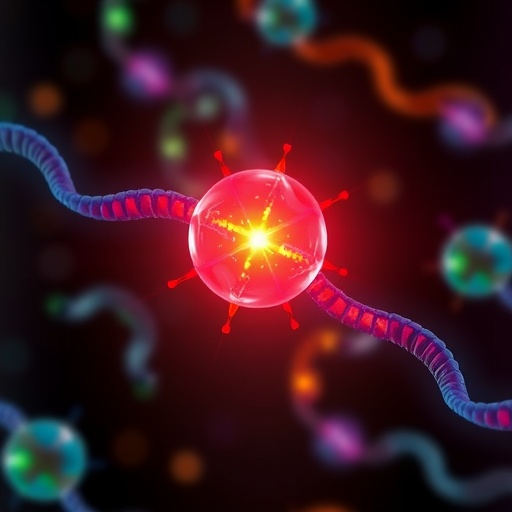In a groundbreaking advancement for cellular biology, researchers have developed a sophisticated method for imaging-based multiplexed in situ profiling of spatial transcriptomes. This innovative approach, which comprises STARmap PLUS, RIBOmap, and TEMPOmap, represents a significant leap in our capacity to understand gene expression dynamics within cells and tissues. By focusing on the RNA lifecycle, this protocol opens doors to a plethora of insights regarding how protein synthesis is regulated spatially and temporally.
The importance of gene expression programs cannot be understated as they form the backbone of cellular functions and activities. At its core, the RNA lifecycle is vital in controlling where and when proteins are synthesized. The newly introduced methodology cleverly integrates several existing technologies to provide a nuanced look at the molecular dance of RNA and its implications for cellular behavior, enabling scientists to visualize and quantify the dynamic interplay of RNAs in their native environments.
One of the standout features of this protocol is its ability to utilize antibody-based protein co-mapping along with advanced sequencing techniques. By selectively converting targeted RNAs, ribosome-bound mRNAs, and metabolically labeled RNAs into DNA amplicons, researchers can generate gene-unique barcodes that facilitate in situ sequencing. This process is harnessed within a confocal microscope setting, offering a powerful lens through which the spatial distribution and temporal changes of RNA species can be observed.
What sets the STARmap PLUS, RIBOmap, and TEMPOmap approach apart from other existing methods is its extraordinary analytical capacity. While traditional techniques may fall short in terms of spatial and temporal resolution, this integrated toolkit enables the simultaneous tracking of thousands of RNA species in intact cells and tissues. This level of multiplexing not only enhances the precision of the data but also enriches the overall understanding of the transcriptomic landscape within various cellular contexts.
The experimental protocols associated with these methodologies are accessible for laboratories already familiar with RNA handling and possessing confocal microscopy tools. The preparation of the amplicon library is designed to be efficient, taking only two to three days followed by variable sequencing times based on the sample size and the number of target genes. This streamlined workflow empowers scientists to gather substantial amounts of data quickly, expediting the drive towards deeper biological discoveries.
After obtaining the spatially resolved single-cell profiles, researchers can embark on various downstream analyses. Cell type classification, cell cycle identification, and the determination of RNA lifecycle kinetic parameters are just a few of the analyses made possible by the rich datasets generated through this protocol. Comprehensive computational analysis, guided by established tutorials, enables researchers to draw meaningful insights from their gathered data, further illuminating the complexities of RNA dynamics.
Additionally, the STARmap PLUS, RIBOmap, and TEMPOmap techniques have profound implications not only for basic research but also for applications in disease studies and therapeutic innovations. A clearer understanding of RNA dynamics within heterogeneous populations could pave the way for novel therapeutic strategies, particularly in complex diseases such as cancer, where localized gene expression patterns can greatly influence treatment efficacy and disease progression.
As more laboratories adopt these advanced methodologies, the collective knowledge surrounding spatial transcriptomics is poised to expand exponentially. Innovations within this field will propel forward our understanding of how genes are regulated and expressed in health and disease. Researchers are encouraged to delve into this spatial omics toolkit, allowing them to unlock new dimensions of biology that have remained elusive until now.
The future of cellular studies is rapidly evolving, and this integrated protocol serves as a beacon for researchers. By employing STARmap PLUS, RIBOmap, and TEMPOmap, scientists can create detailed maps of transcriptomic activity, which will ultimately advance our grasp of molecular biology on many levels. This fusion of technology and biology heralds a new era in understanding the intricate relationships that govern life at the cellular level.
In conclusion, advancements in imaging-based multiplexed in situ profiling are set to revolutionize the way we investigate the RNA lifecycle. As researchers leverage these cutting-edge techniques, they are likely to uncover nuanced insights into the spatiotemporal dynamics of RNA which could reshape our understanding of cellular functions and diversity. This work not only signifies a technical marvel but also stands as a testament to what can be achieved when innovation in methodology meets the curiosity of scientific inquiry.
Ultimately, the integration of advanced protocols in visualizing and quantifying RNA’s spatial-temporal dynamics encapsulates the essence of modern biology. The STARmap PLUS, RIBOmap, and TEMPOmap methodologies exemplify the ambitious strides being made in the field, propelling both basic and translational research to new heights in understanding the complexities of life itself.
Researchers and institutions engaged in cellular biology are hereby invited to embrace this toolkit, not merely as a collection of techniques, but as a transformative lens that reconfigures how we observe and understand the intricacies of gene expression. The potential implications of this technology, both for fundamental science and for clinical applications, are vast and ripe for exploration.
Subject of Research: RNA life cycle and spatial transcriptomics
Article Title: Spatially resolved in situ profiling of mRNA life cycle at transcriptome scale in intact cells and tissues using STARmap PLUS, RIBOmap and TEMPOmap
Article References:
Ren, J., Zeng, H., Huang, J. et al. Spatially resolved in situ profiling of mRNA life cycle at transcriptome scale in intact cells and tissues using STARmap PLUS, RIBOmap and TEMPOmap. Nat Protoc (2025). https://doi.org/10.1038/s41596-025-01248-3
Image Credits: AI Generated
DOI:
Keywords: Spatial transcriptomics, RNA lifecycle, gene expression, confocal microscopy, STARmap, RIBOmap, TEMPOmap, multiplexing, single-cell analysis, cellular biology.
Tags: advanced sequencing technologiesantibody-based protein co-mappingcellular behavior visualizationgene expression dynamicsin situ RNA profilingmRNA life cycle mappingmultiplexed imaging methodsprotein synthesis regulationRIBOmap applicationspatial transcriptomics techniquesSTARmap PLUS methodologyTEMPOmap integration





